I spotted this beautiful moth this week. Notice the silky threads at the back of the abdomen. I wonder if she was spinning a cocoon? I’m also wondering if it’s the white spring moth Lomographa vestaliata. Biologists, please share your comments freely. That’s how we learn (William Penn biology professor Pete Eyheralde suggested an alternative. “Your moth looks like an elm spanworm - named for the caterpillar (inchworm) stage instead of the adult.” Naturalist and writer Larry Stone who writes the excellent newsletter “Listening to the Land” offers this contribution: When I asked my moth-expert friend, Jim Durbin of Cedar Rapids, to ID a white moth we saw last week (pix attached), he called it Elm Spanworm Moth (Ennomos subsignaria).
It looks like we have a consensus.
Below is a short video I took. It’s so incredibly beautiful.
Some say, “The white moth is primarily a symbol of change and transformation. They are considered to be messengers from the spirit world, carrying the message of peace and purity to the world. They can be spirit messengers, allowing you to gain insight into your loved ones' lives as well as see and guide you.”
Above is a beautiful flowering tree. (Professor Pete added this in the comments: “The "flowers" on that tree are actually the fruits (fertilized and developed flowers) of an ironwood or hop hornbeam tree. I wonder if those "hops" make good beer?” Larry Stone agrees. Thanks, Pete and Larry!)
This spot has some of the oldest trees in the woods, and Thursday and Friday brought some amazing bird calls. First, on Thursday here is an exchange of calls by several Red-bellied Woodpeckers. Courtship! You will also hear one or more Red-eyed Vireo, Eastern Wood-Pewee, and Downy Woodpeckers:
While that was fascinating, even better are three or four Barred Owls coming from different directions in this audio. Too bad the audio isn’t three-dimensional. Even more bird courtship! You will also hear Red-eyed Vireo, White-breasted. Nuthatch, Red-Bellied Woodpecker, Blue Jay, Scarlet Tanager, and Eastern Wood-Pewee:
Above are a couple of peaches from a peach tree on a fence row. The peach tree is not a native tree of North America. It is a native of Asia, specifically northwest China. It was believed to be introduced to North America by Spanish explorers, and once it was introduced to North America, Native Americans planted it and used the fruits commonly.
Peaches are a symbol of fertility, immortality, and the fleetness of life.
The tree is about 15 feet high, and adjacent to a hilly field. There may have once been a house on the hill where the homeowner planted a peach tree and this tree germinated from it. That, or someone dropped a pit years ago. Animals also distribute the seeds of peaches.
One morning we got some rain and a little thunder. You will also hear some frogs and a very busy House Wren at the pond.
This morning was so cool and beautiful, I just had to do a 360-degree video:
And finally, some human courtship:
I think this is a lovely photo, and hope you do too. We are looking down over the Cedar Creek/Des Moines River floodplain, and while the leaves of the trees look like it’s fall, it’s just the early morning sun.
I’m a member of the Iowa Writers Collaborative. Please sample the talents of my fellow collaborative members. If you can afford to be a paid subscriber, that would be great. If not, the vast majority of content is free. And here is a link to the Iowa Podcasters’ Collaborative, should you be interested. Check out my Substack Deep Midwest: Politics and Culture if you aren’t already a subscriber. My Iowa Revolution podcast with award-winning broadcaster Spencer Dirks can be found here.
After retiring from radio, I know a little about public relations and have started a small consulting group and associated Substack called Better PR. You might be interested in what I have to share there. Thanks!

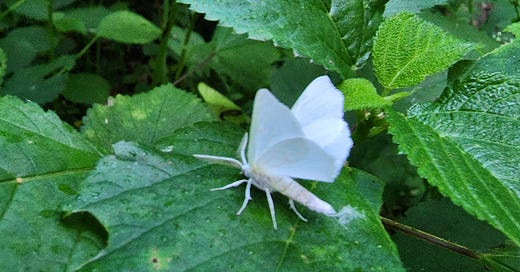




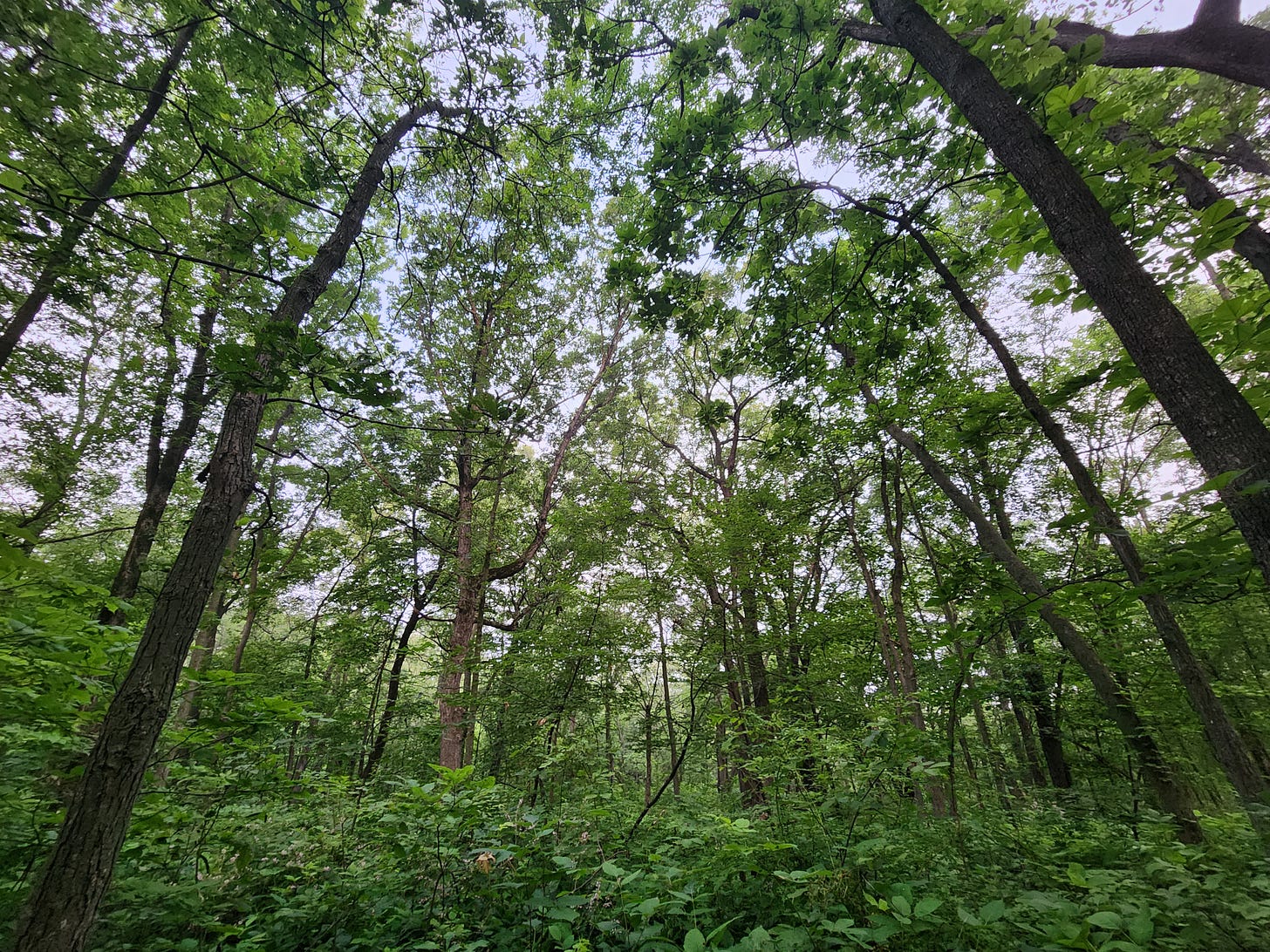
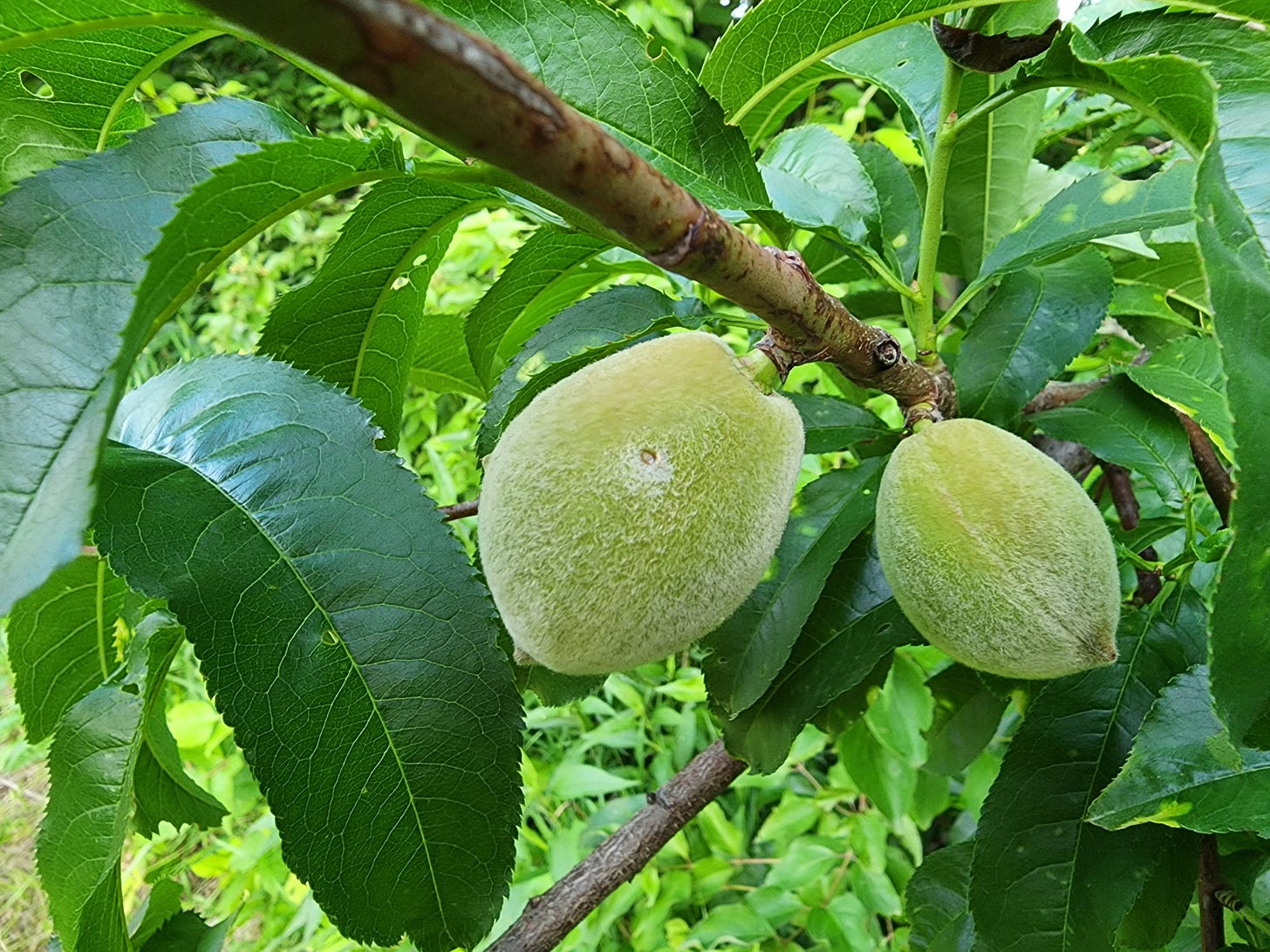
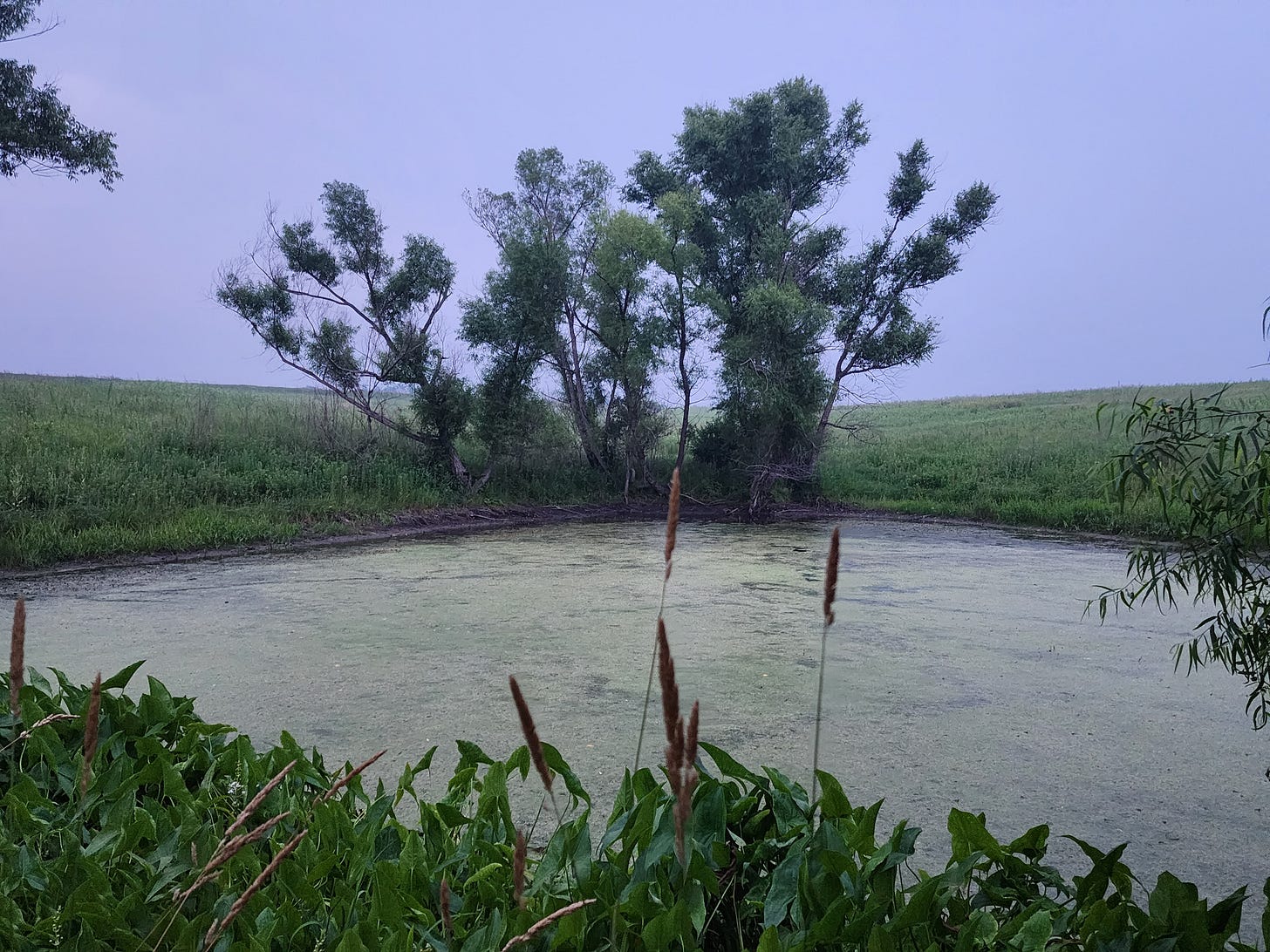
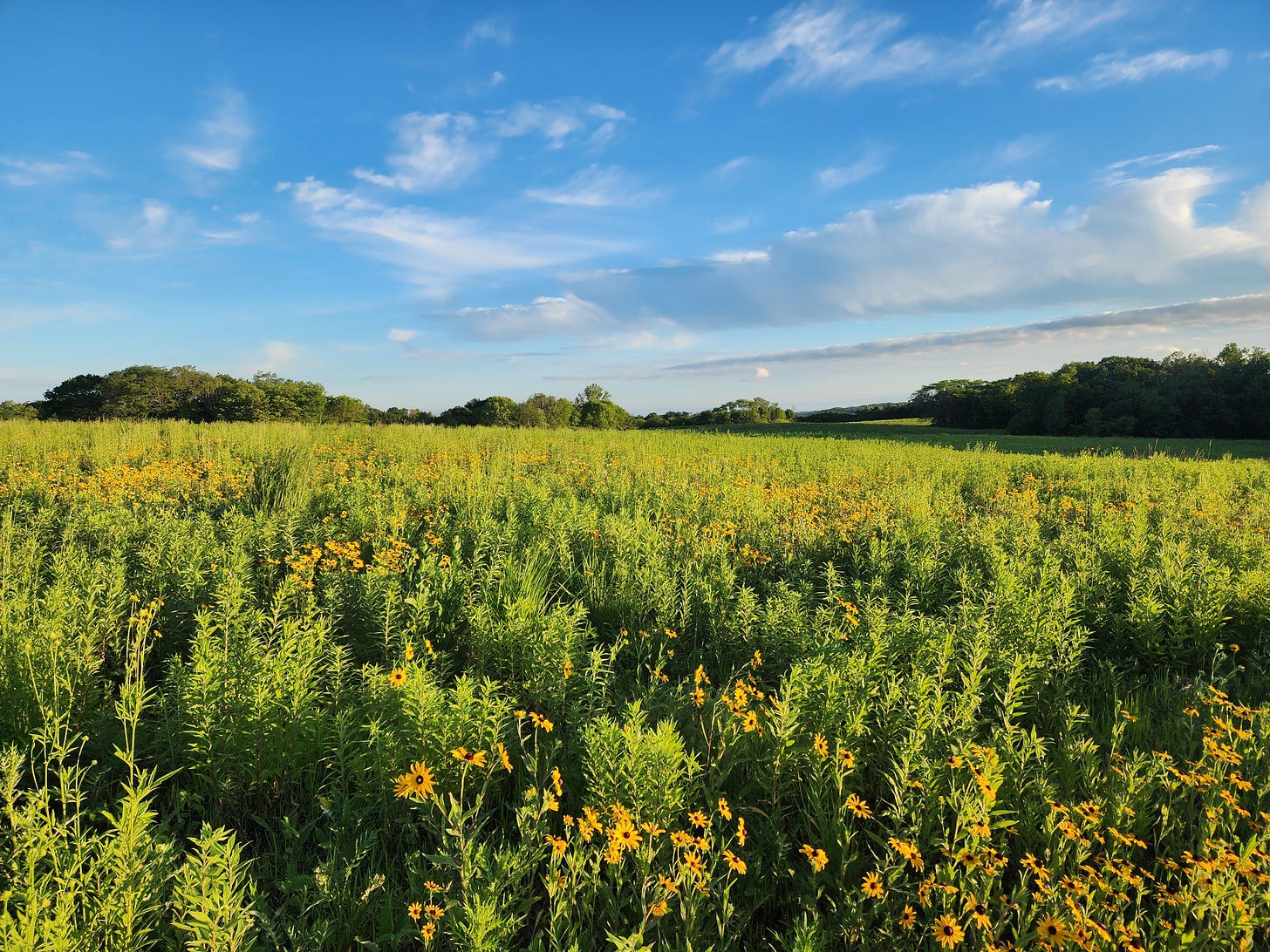
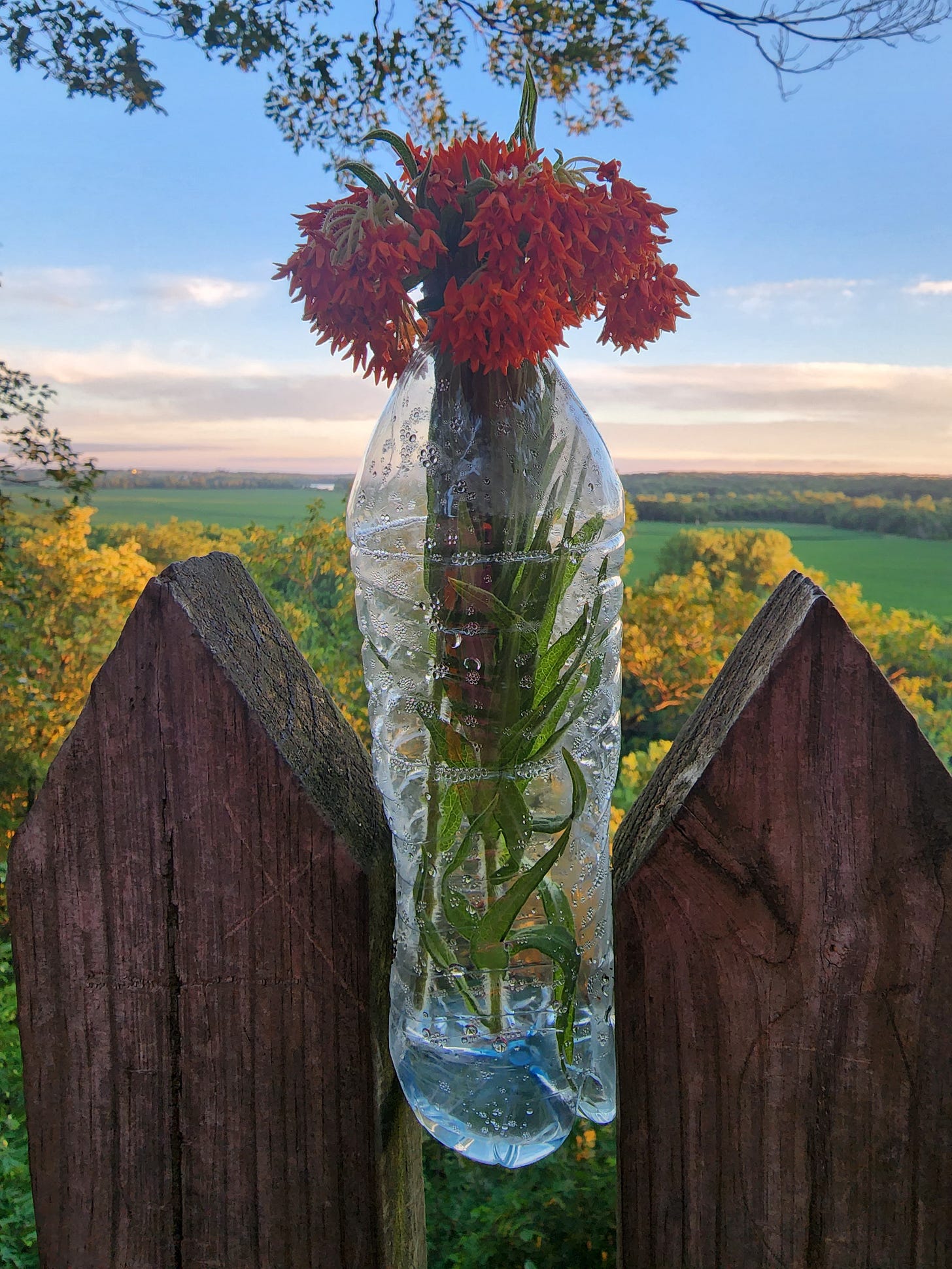
What a glorious white moth! Thanks for the lovely photo and video.
The "flowers" on that tree are actually the fruits (fertilized and developed flowers) of an iron wood or hop hornbeam tree. I wonder if those "hops" make good beer?